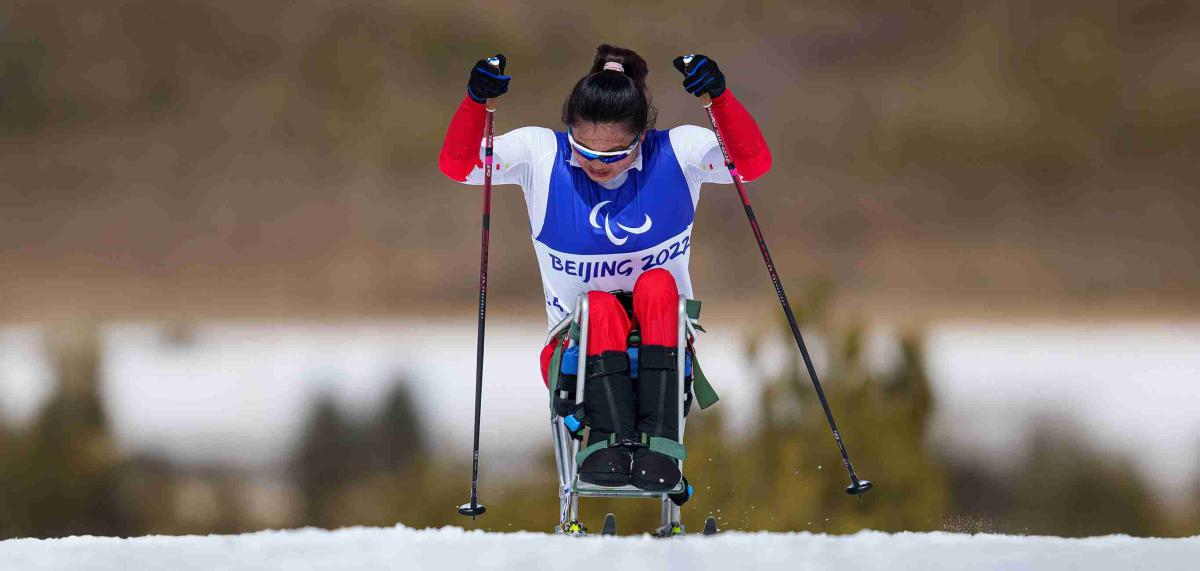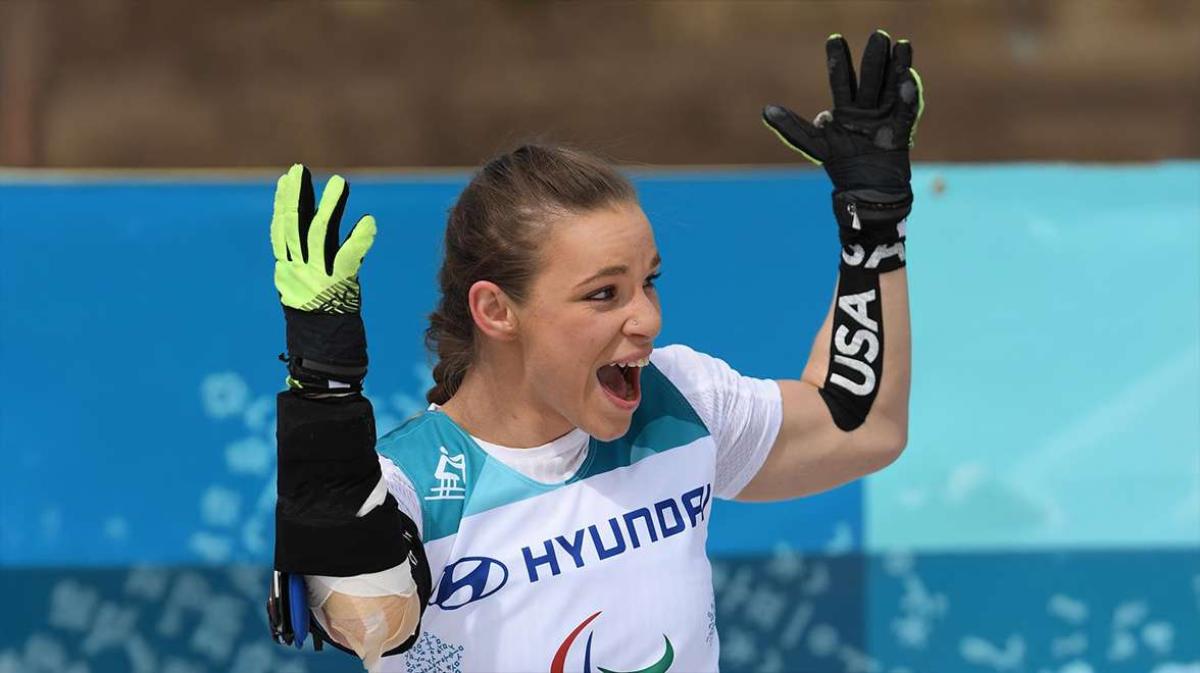
PARA CROSS - COUNTRY
One of the oldest types of skiing, cross-country skiing is also one of the most popular Paralympic winter sports.
about Para cross-country skiing
Para cross-country skiing has been part of the Paralympic winter sports programme since the first winter Games were held in Örnsköldsvik, Sweden in 1976. The competition is open to athletes with physical disabilities in the upper and lower limbs (standing) and lower limbs and trunk (sit-ski), as well as individuals with vision impairments.
Athletes compete in sprint (2.5km), 10km and 20km races or in a team relay using classic or free-style techniques..
Depending on the limits of activity due to disability, a competitor may use a sit-ski — a chair equipped with a ski. Athletes with vision impairments can compete in the race with a sighted guide.
Para cross-country skiing, along with Para biathlon, forms the discipline of Para Nordic skiing.
The International Ski and Snowboard Federation (FIS) is the global governing body of Para cross country skiing.
Para cross-country skiing History
Para cross-country skiing appeared at the inaugural Örnsköldsvik 1976 Paralympic Winter Games with standing and vision impaired athletes competing. Men and women used the classic technique in all distances until skating was introduced at the Innsbruck 1984 Paralympic Winter Games. Since then, Para cross-country skiing events have been split into two separate races: classic and free technique.
The new technique, however, was not officially used in a medal race until 1992 in Albertville, France.
Sitting events were introduced at the Lillehammer 1994 Paralympic Winter Games.
To date, Norway is the most successful nation in the sport while the most male and female athletes with the most victories are Canada’s Brian McKeever (16 gold medals, two silver medals, and one bronze medal) and Norway’s Ragnhild Myklebust (16 gold medals) respectively.
Did you know ?
Oksana Masters, US Paralympic cycling gold medallist, also secured three gold medals in Para cross country skiing across two Paralympic Winter Games.

Video
Cross Country Skiing News
View more
Germany’s Anja Wicker wants to race like the wind
German Para cross-country skier and biathlete Anja Wicker is hungry for more medals as she gears up for her fourth Paralympic Winter Games

Norway’s Vilde Nilsen aims to reel in Paralympic gold
Spending time in the Norwegian wilderness, hunting and fishing, helps Paralympian Vilde Nilsen relax and balance the demands of training and competition

Canadian skiers set to push next level at Milano Cortina 2026: McKeever
Sixteen-time Paralympic champion Brian McKeever has high hopes for rapid racing and technically challenging Para cross-country skiing and biathlon at the Milano Cortina 2026 Paralympic Winter Games

Keeping up with the Paralympians
We spoke with four Paralympic medallists at the FIS Para Cross-Country World Championships, which took place in Toblach, Italy, from 12-14 February.

Paralympic stars shine at Milano Cortina 2026 test event
The IBU Para Biathlon World Cup and the FIS Para Cross-Country World Cup made a stop in Val di Fiemme, which will stage 38 medal events at the Milano Cortina 2026 Paralympic Winter Games

What are you looking forward to the most at Milano Cortina 2026?
We asked athletes what they are looking forward to at the Milano Cortina 2026 Paralympic Winter Games and why you should join the spectacle
Federation contact information
The International Ski and Snowboard Federation (FIS) governs the sport of Cross country skiing.
Contact
Bruno Sassi
PARA CROSS - COUNTRY SKIING
Search for all results from Paralympic Games events and selected other international Para sport events.
Cross-Country Skiing FAQs
Para alpine skiing requires athletes to complete a course skiing downhill and passing through gates, whereas Para cross-country skiing courses are longer in distance and the sport requires greater endurance.
Para Nordic skiing includes both Para cross-country skiing and Para biathlon.
Para cross-country skiing involves short, middle and long distances, ranging from 2.5km to 20km.



